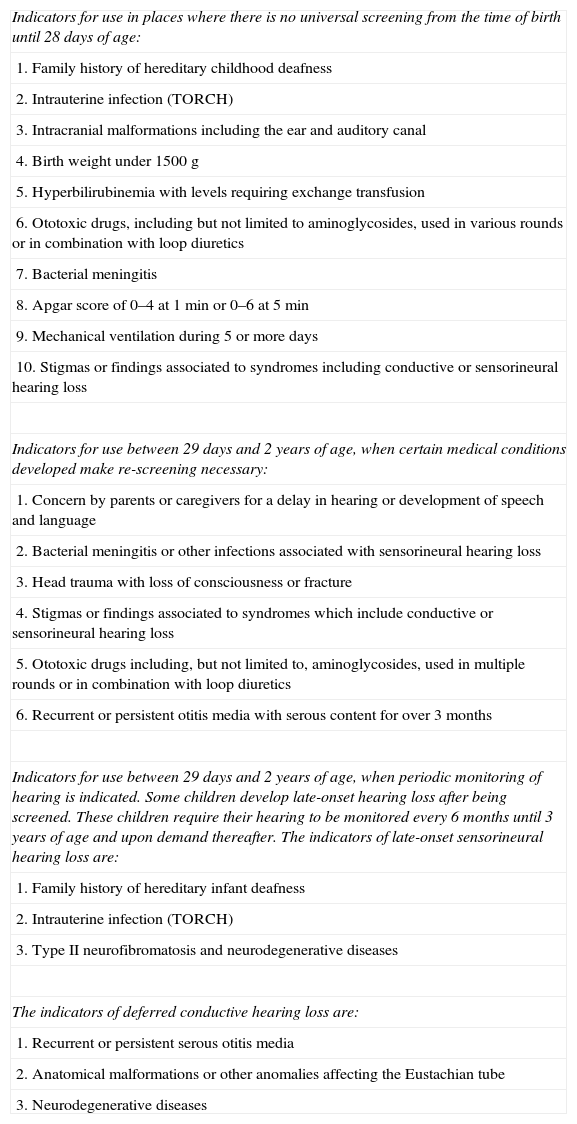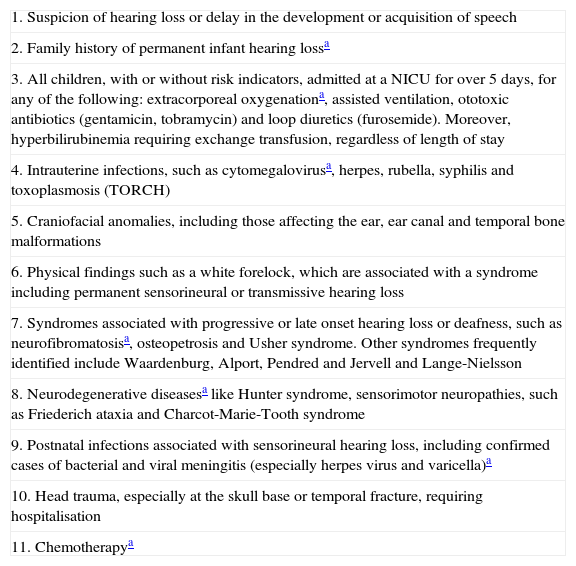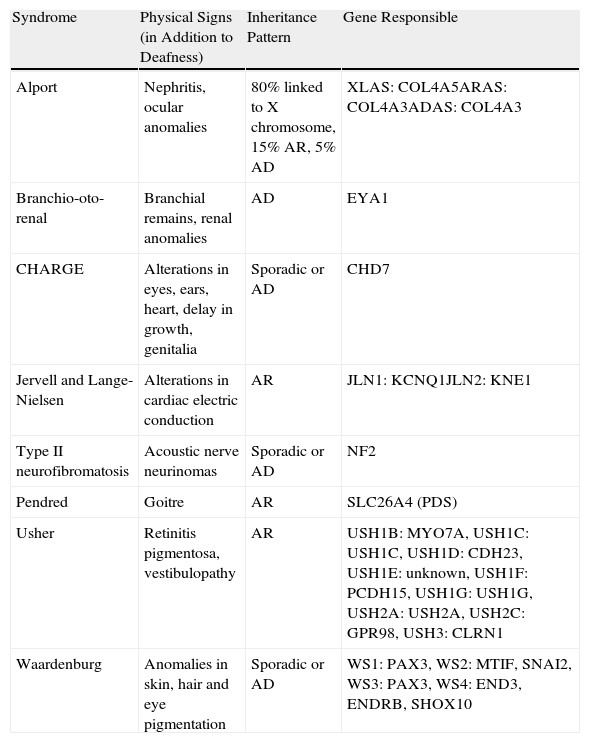In the last decade, tremendous progress has been made very rapidly in the development of Early Hearing Detection and Intervention (EHDI) systems as a major public health initiative. The percentage of infants screened annually in Spain has increased significantly since the EHDI systems have expanded to all autonomic regions. Historically, high risk indicators have been used for the identification of infants who should receive audiological evaluation but who live in geographic locations where universal hearing screening is not yet available, to help identify infants who pass neonatal screening but are at risk of developing delayed-onset hearing loss and to identify infants who may have passed neonatal screening but have mild forms of permanent hearing loss. In this review, the standard risk factors for hearing loss are analysed and the risk factors known to be associated with late onset or progressive hearing loss are identified. The recommendation for infants with a risk factor that may be considered as low risk is to perform at least one audiology assessment in 24–30 months. In contrast, for an infant with risk factors known to be associated with late onset or progressive hearing loss (such as cytomegalovirus infection or family history), early and more frequent assessment is appropriate. All infants should have an objective standardised screening of global development with a validated assessment tool at 9, 18 and 24–30 months of age or at any time if the health care professional or the family is concerned.
En la última década hemos asistido a un rápido y tremendo progreso en el desarrollo de los sistemas de diagnóstico y tratamiento precoz de la hipoacusia infantil dentro de programas de salud pública. El porcentaje de niños cribados anualmente en España se ha incrementado significativamente al haberse extendido los programas de atención al déficit auditivo infantil a todas las autonomías. Históricamente, los indicadores de alto riesgo han sido empleados para la identificación de los niños que debían ser evaluados audiológicamente por vivir en áreas remotas donde los programas de cribado no existían, para ayudar a identificar aquellos niños que, aunque hayan pasado el cribado, siguen presentando riesgo de desarrollar una hipoacusia diferida y para identificar los niños que presentan hipoacusias permanentes leves no detectadas en el cribado. En esta revisión se analizan los indicadores de riesgo de hipoacusia y se identifican los factores que se asocian a sus formas de presentación diferida. La recomendación establecida es que se lleve a cabo al menos una revisión audiológica entre los 24 y los 30 meses de edad en los niños con un indicador de bajo riesgo. Sin embargo, para aquellos que presenten factores de alto riesgo como la infección por citomegalovirus o antecedentes familiares de hipoacusia es apropiado realizar un seguimiento más frecuente y temprano. Para todos los niños, incluidos los que carecen de indicadores de riesgo, se debería comprobar su desarrollo global con una herramienta validada a los 8, 18, 24 y 30 meses de edad o antes si existe preocupación de los padres o cuidadores.








